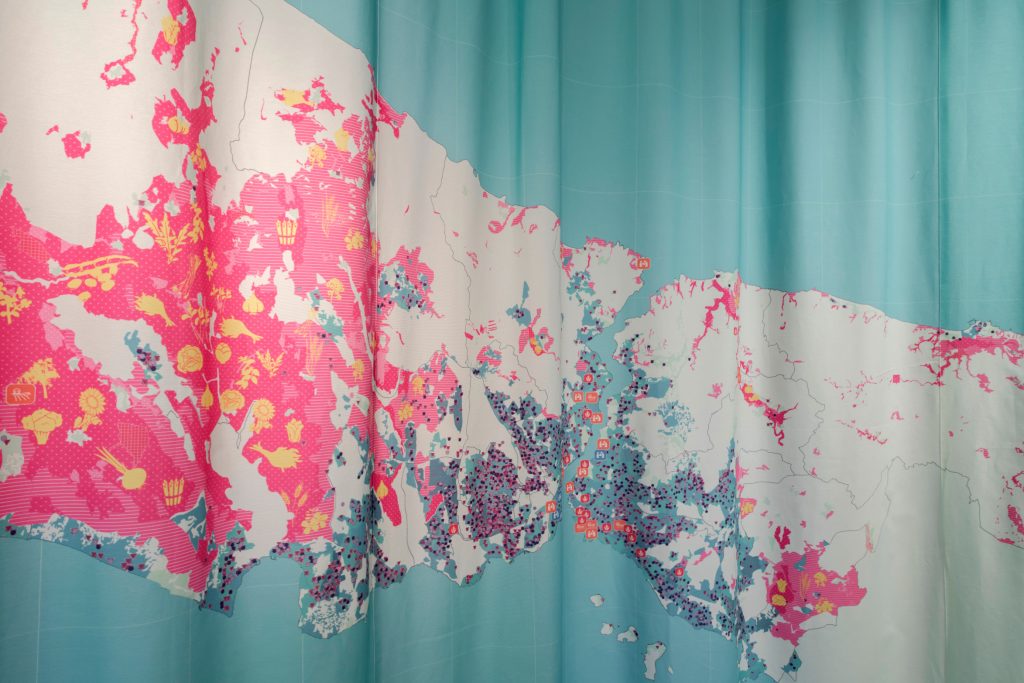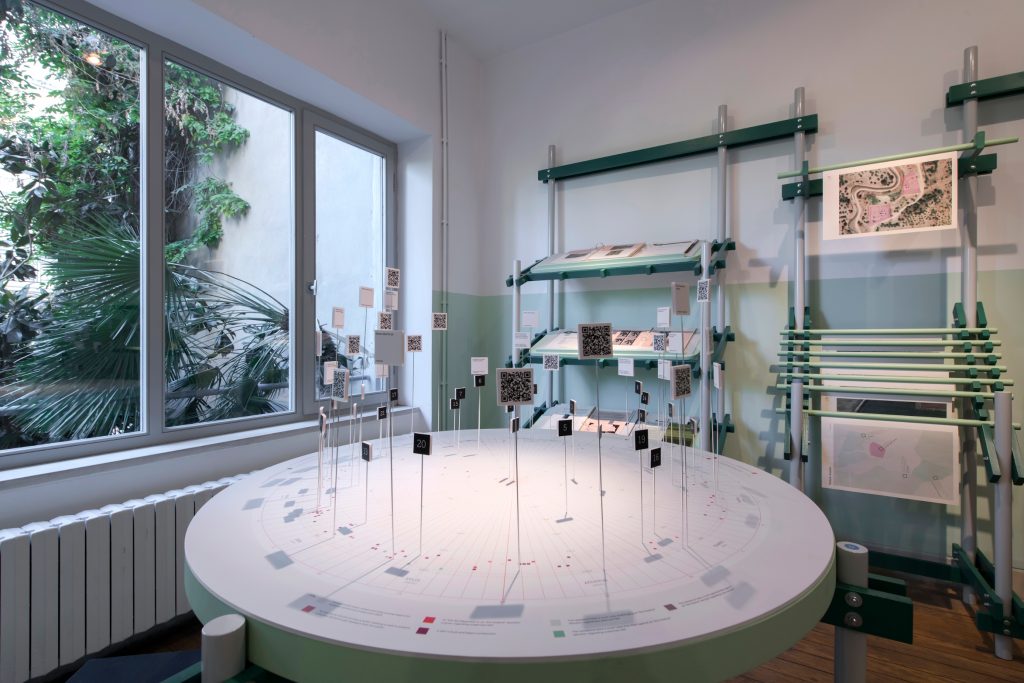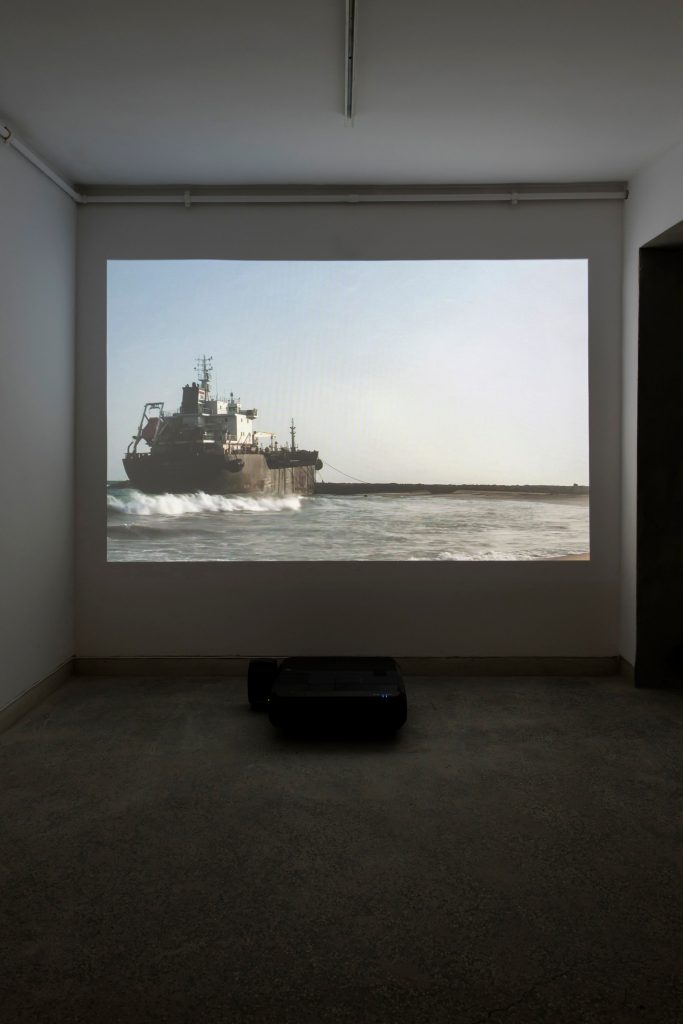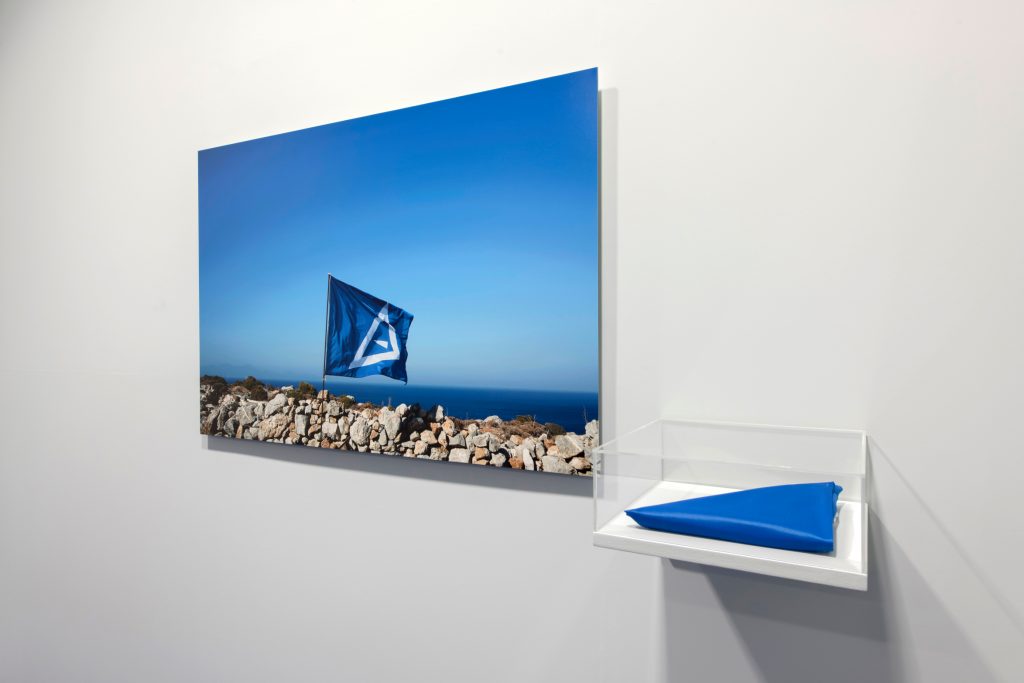by Matt Hanson November 2020
The essence of time is organic. While the terms for measuring the passage of life from one phase to the next have become an anthropocentric figment of Western reductionism’s automatic, mechanical concept of the universe, its natural manifestation, as pulse, and cycle, has its parallel in spiraling mortal coils, the transformations of seemingly inanimate substances, the chemistry of their compounds, the physics of their movements. Yet, life itself is arguably less definable than the seconds of a minute, or the days of a year. The mystery of what that is which breathes its last, or reproduces of itself or in pairs transcends and predetermines scientific approaches to an objectification of the world and the origins of its surrounding space.
There are some alternative thinkers who, by looking directly at such problems as concerns the basic principles of experimentation and experience, return to society proper with unpopular tales, which, if held, would rewrite the underlying narratives on which the current, decadent civilization of Western rationalism bases its sources of power. The parapsychological biologist Rupert Sheldrake, criticized as a heretic by the scientific community, posited the idea that the creativity of the universe is not unlike human imagination, and that there are identifiable subconscious and extraordinary precedents for its ongoing evolution, from stardust to culture.
The application of linear continuity, and the imposition of subjective progress finds a humble, reliable antidote in the concept of the globe as a vessel for art; a garden of all creation. Istanbul’s 5th Design Biennial has prompted a distinctive assembly of inventive makers, homegrown and afield, inclusive of those more inclined to technicality and pragmatics than that which might be found from the city’s contemporary art biennial. The theme of the year reappraises the human capacity for empathy with respect to ecological awareness. Istanbul, when seen as a landscape of waterways, is rife with material for designers to grasp and relay.
As part of its newfangled network of physical and conceptual integrations with the urban environment, curator Mariana Pestana oversaw the installation of nine public works for the 5th Design Biennial opening on the 15th of October, with five more on the way slated for April. In Moda, on its highly peopled coastal park, Istanbul-based artist Eli Bensusan designed a sundial, after the original aesthetic that he developed for his jewelry and drawings, a gritty, basic iron-hard mineral constitution. With a background in industrial design, educated at the Art Institute of Chicago, Bensusan’s piece excavates its context with piercing insight.

Eli Bensusan, Sundial of the Blind, 2020, installation view at the 5th Istanbul Design Biennial, Istanbul, Moda. Photo: Kayhan Kaygusuz
Sundial of the Blind points to the North Star. It is circular, yet sharp, juxtaposing semicircles against a halved globe, across a multidimensional plane of flat, abstract shapes, together with their fully functional counterparts. Along its weathered side, braille elaborates the myth of the ancient site of Chalcedon, the prehistoric predecessor of Kadıköy. It is said that when settlers first topped the peak on which Topkapi Palace now rests, they looked across the Sea of Marmara and mocked Chalcedon, calling them blind for having missed the peninsula along the Golden Horn, where the world’s capital stood for centuries.
It is a twist of fate that Kadıköy, in many ways, now represents one of the most important bastions of liberal, pro-youth urban culture in Turkey, blind though the people of Chalcedon may have been to how history’s course is so often dependent on the geography of the landscape in which it is written. But it is clear to all when those who have ascended the proudest height in the land come tumbling down, invariably scratching and clawing at the foundations of their empty temples and the eroding earth beneath as they wash ashore, like the victims of shipwreck they once enslaved to build their inglorious monuments to the age of man.
Bensusan, instead, has created a work that reminds countless passersby of an earlier, even timeless orientation that a city, as a community, might have to the planet, and on a stretch of coast almost constantly busy with foot traffic. To conclude the explanatory text displayed before the piece, the final sentence reads, “This piece uses design as a tool to reconnect citizens with immediate and distant bodies and myths, generating a multi-layered image of contemporary Kadıköy that transcends temporal relations.” Under the influence of direct sun, Sundial of the Blind is an affirmation of systemic flux as the music of the spheres.
By associating its discourse with that of the Oracle at Delphi in the temple of Apollo, Sundial of the Blind resurrects a Grecian mood to the shores of the Marmara, which to the land’s bygone Hellenic culture was known as Propontis. Its northernmost waters, merging with the Bosphorus strait and Golden Horn inlet, lap up against steeply rising slopes leading to Istanbul’s sister district, as concerns style and popularity, that of Cihangir. And shaded by a thicket of broad-leaved trees, the art space ARK Kültür is hosting the interior exhibitions of the 5th Design Biennial along with Pera Museum.
Under the heading, “Library of Land and Sea”, the Biennial has opened a temporary autonomous zone for workshop research, rich with informational multimedia that has visualized, documented, and elaborated on the theme of empathy for local and regional, specifically Mediterranean ecologies. A text, framed on the wall in the entry foyer at ARK Kültür describes the installation as an “educational space that invites visitors to rethink the concept of the Mediterranean through interrogating our relationship with land and sea.” The central point of its exhibited material is to “reveal hidden narratives and networks of food production.”

Luigi Coppola, Vivien Sansour & Pelin Tan, The Care of Seed: An Entangled Kinship, 2020, installation view at ARK Kültür, 5th Istanbul Design Biennial. Photo: Kayhan Kaygusuz
Among untold records, kept in the interest of public good, books, documents, maps, photographs, films and artifacts is a canvas, hung loosely and wrinkled. There are block paragraphs marked across its rumpled white surface. Three sketches by designers Luigi Coppola, Vivien Sansour and Pelin Tan conjure the historical, botanical and social life of the tomato, which, although for centuries traditional to Italian and Turkish cooking, comes from a long line of New World colonization, and Western naturalism. a canvas, hung loosely and wrinkled. There are block paragraphs marked across its rumpled white surface. Three sketches conjure the historical, botanical and social life of the tomato, which, although for centuries traditional to Italian and Turkish cooking, comes from a long line of New World colonization, and Western naturalism. The handwritten notes, scrawled across the installation, The Care of Seed: An Entangled Kinship, neatly present well-read, newsworthy accounts of exploitation since Aztec gardeners grew their ruby Nahuatl fruit of Mexico for the courts of Iberian royalty.
In a clip from an article published in January, 2017 on the investigative journalism site, “theblacksea.eu“, the canvas sprawls with unspeakable tragedy, “Child victims of war as young as 11 earn less than 10 TL [Turkish liras] a day picking tomatoes for EU supermarkets.” These texts are beside the image of a black fist raised in the air, as in solidarity with workers, palming a red tomato, and not crushing it, but holding it up, for all to see. Across the way inside ARK Kültür, are the results of comprehensive research on Istanbul’s food production from soil to supermarket, led by Aslıhan Demirtaş and her students at Kadir Has University.
The maps prepared by Demirtaş and her team are exhaustive, spanning the diversity of Turkey’s complex agricultural industry. One broad, multicolored key of Istanbul’s landscape, which appears as two arms of the continents, outstretched, and just nearly touching, like Michelangelo’s fresco, The Creation of Adam. Gardens (bostans), of which Istanbul claims to sustain plots since the 17th century, are itemized as active or extinct, as “food communities”, and “farms – eco initiative”. These are categorized with agricultural zones, including meadows, greenhouses, pastures, special products, conventional, irrigated, dry, and dry marginal farms.

Aslihan Demirtas & UrbanAgrIst, Agros Istanbul, 2020, installation view at ARK Kültür, 5th Istanbul Design Biennial. Photo: Kayhan Kaygusuz
Along with markets, and supermarkets, hundreds of informational points are presented by the map, which is spread out in an educational setting with thick binders full of supplementary research documentation, as well as popular magazines on the history and culture of Istanbul’s food networks. There is a brochure specially dedicated to raising awareness about the endangered Bosphorus bluefish, a card catalogue with local gardener’s products from social media, and an interactive digital map, on a tablet, locating cooperatives and suppliers in Turkey, from Hatay to Edirne, color-coded and magnified around Istanbul.
The spatial design of the canvas map by Demirtaş and the UrbanAgrIst team that produced the multivalent installation, Agros Istanbul has a refreshing alternative in the approach of Aslı Uludağ to her work, Mattering of a Productive Mythology, which speaks of ecological degradation and economic exploitation in Turkey’s geothermal extraction industry since the 1960s. In collaboration with local women, as well as olive and fig growers in Kızılcaköy, an Aegean village, Uludağ detailed her participatory project of research as resistance into evidence by the numbers, complete with QR-coded calendar of records.

Asli Uludag, Mattering of a Productive Mythology, 2020, installation view at ARK Kültür, 5th Istanbul Design Biennial. Photo: Kayhan Kaygusuz
There are four separate spaces at ARK Kültür, and against a stairway that would divide a second floor from the basement section, a collective of interdisciplinary artists, researchers and designers based in Johannesburg, South Arica have posted recipes in Arabic, among them the Moroccan harira soup, and Egyptian country bread. Their project, Material Histories: Sands, Soils, Recipes and Other Archives is steeped in languages and expressions of design tailored specifically to the African context from which it emerges. Embracing the intercultural potential of speculative history, Counterspace explores the architecture of collaboration.
And where the tree-sheltered interior of Ark Kültür descends below its entrance floor, series of videos and works by Dele Adeyemo, TiriLab, theOtherDada and Pelin Tan elaborate on related themes. The sheer amount of printed material, visualized information and documentary video at ARK Kültür alone, and at the Design Biennial in general demands a fixed, sustained attention to industry knowledge, provoking empathy through a powerful suffusion of specific, experiential knowledge. The artists, researchers and makers involved were more or less tasked with bridging the gap between consumers and producers.

Dele Adeyemo, The Cosmogony of Racial Capitalism, 2020, installation view at ARK Kültür, 5th Istanbul Design Biennial. Photo: Kayhan Kaygusuz
As is clear in such works as that conceived by Adeyemo, there are rifts, both physical, like the Büyük Menderes Graben valley of Uludağ’s study, and symbolic or ideological, as that wrought by colonialism and its appropriation of international trade. These socioeconomic phenomena divide, or cleave the natural relationships of growers to eaters, into separate identities and histories. The video work, The Cosmogony of (Racial) Capitalism by Adeyemo investigates the rippling effects of sugar-cane plantations, and how slave routes across the Atlantic and in the Mediterranean continue to shape the tides of global agricultural production.
The Cosmogony of (Racial) Capitalism is a video essay, no less urgent though presented more drily, as historical theory, in contrast to the immediate, and current daylight activism captured by theOtherDada, for their project, theOtherForest, an urban reforestation project in Beirut. Led by theOtherDada founder Adib Dada, whose professional specialization is termed as, “Regenerative Consultancy & Architecture”, the video shows a team, including Dada, practicing the re-wilding Miyawaki method, mixing soil before a news segment flashes the story of mural painters who joined Lebanon’s recent uprising of civil protests.

Kyriaki Goni, Networks of Trust, 2020, installation view at Pera Museum, 5th Istanbul Design Biennial. Photo: Kayhan Kaygusuz
At Pera Museum, the contiguity of installations for the 5th Design Biennial enjoys a peak flourish of conceptual expression in the multimedia work, Networks of Trust by Kyriaki Goni. Arranged into a consolidated work by 2019, the lowermost gallery, adjacent to the cinema, which also screens an impressive scan of films for the Biennial, includes drawings, audio, flags, notes and as described by curatorial notes, “community building realtime science fiction”. People are given the opportunity to share their “vision for a possible future” via the website, archipelago2092.xyz — designed according to the idea of island-based communication.
Aegean and Mediterranean regions remain host to epochal population movement and climate change since the dawn of humanity. Goni has centered a video poem in the installation that seeks to collect fiction so as to propose new ways to imagine human life on the planet. English subtitles beam over Goni’s recitation in Greek: “After us, other groups too, built links and networks. All sooner or later understood that connecting was the only way to survive.” Or, as Rupert Sheldrake wrote in his 2012 book, The Presence of the Past: “At the moment of insight, a potential pattern of organized behavior comes into being.”

